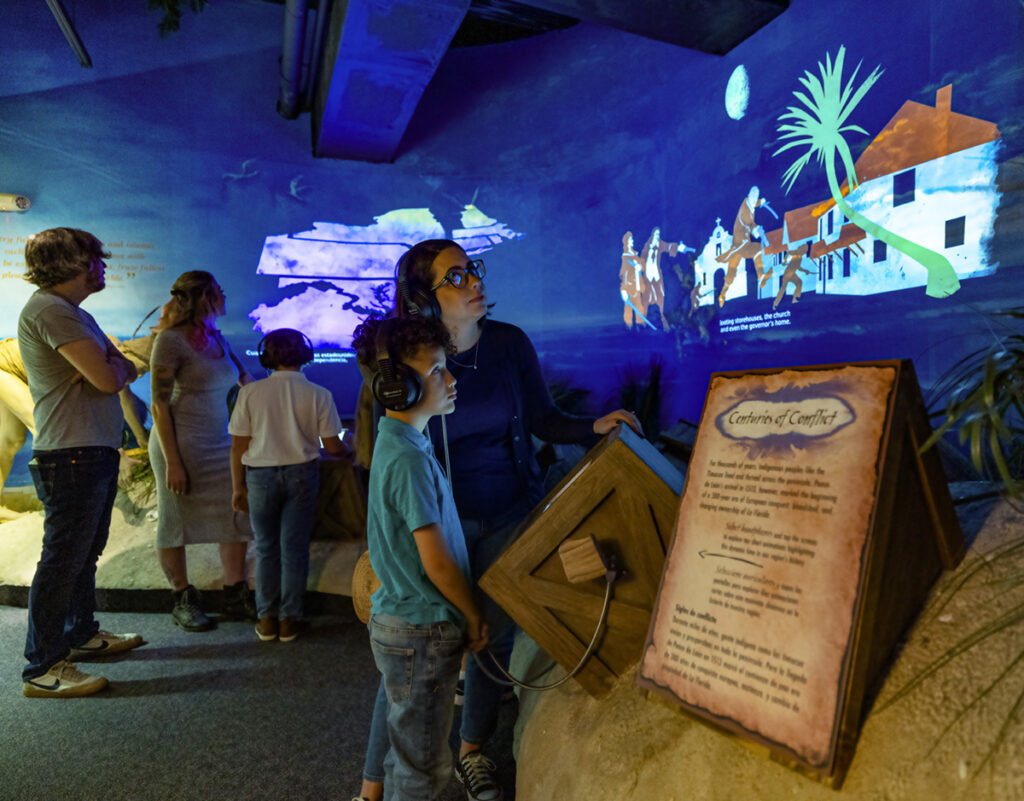
The Orange County Regional History Center is building an even better visitor experience with enhancements to its core exhibitions, which have been in place since the museum opened in 2001 in a historic courthouse in the heart of downtown Orlando. Improvements include increased bilingual content, use of more accurate and appropriate language, and the addition of interactive components.
Throughout the fourth floor of the museum, visitors can now explore the language of some of Central Florida’s native people, the Timucua. Captivating animations projected across the exhibition’s skyscape share the history of centuries of conflict across our state. A hands-on interactive invites museumgoers to activate a large screen demonstrating the science of how sinkholes occur, and how they may have even had an impact during the time of the wooly mammoth.
“We hope these new and engaging elements will help bring history to life for our visitors,” said Pam Schwartz, executive director of the History Center. “They are a step in the right direction for the museum we are working to become.”
Museum visitors can also look for fresh narratives popping up across all the museum’s galleries. One such example is the museum’s ornate historic courtroom where text panels now share stories of cases that happened here, including the story of Lenny Randle, a Black Major League baseball player whose 1977 trial in Orlando after an altercation with his manager became a national event.
Additionally, text panels throughout the museum are gradually being updated to bilingual content. Since 2016, the History Center’s special exhibitions—such as the nationally award-winning Figurehead: Music & Mayhem in Orlando’s Underground currently on display—have been presented in both English and Spanish.
“We continue to research our history and grow our collection,” states Schwartz. “We’re dedicated to better reflecting the story of our entire Central Florida community while we explore longer term opportunities for the museum’s improvement and growth.”

